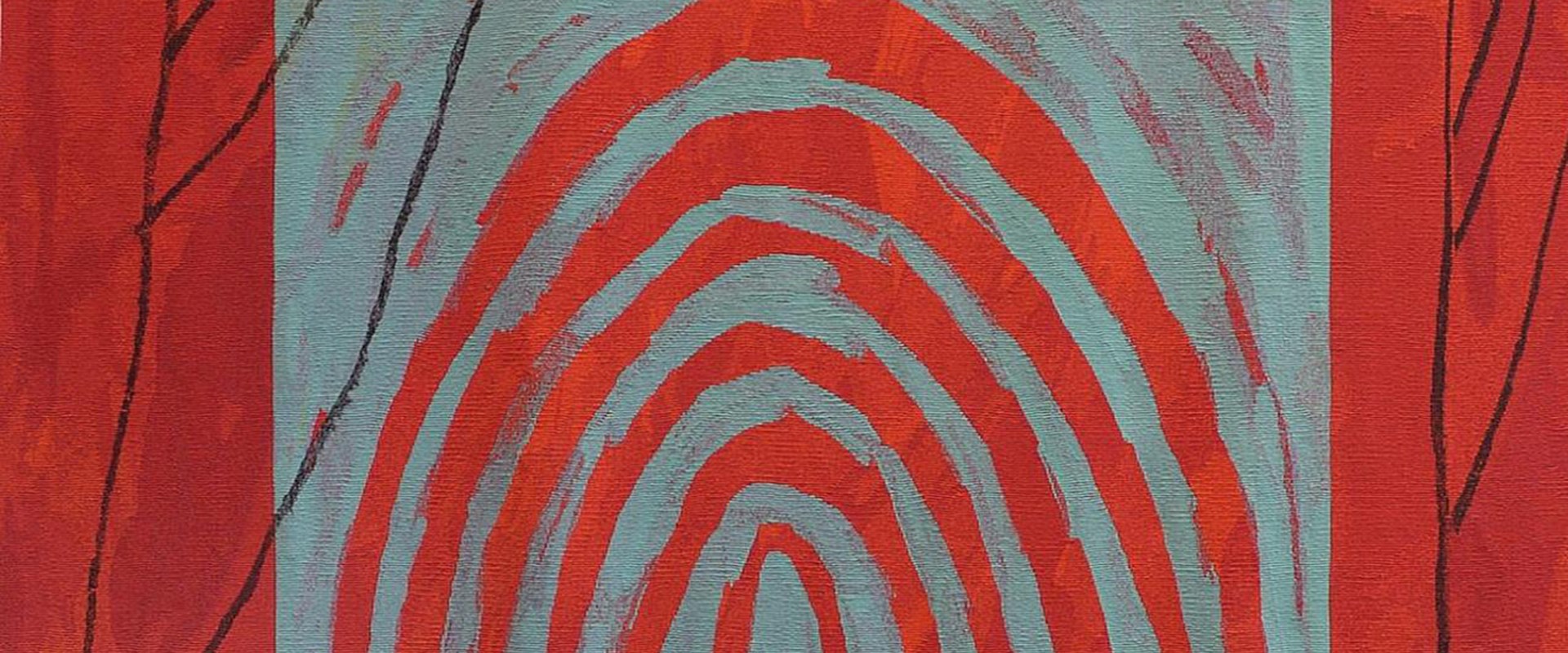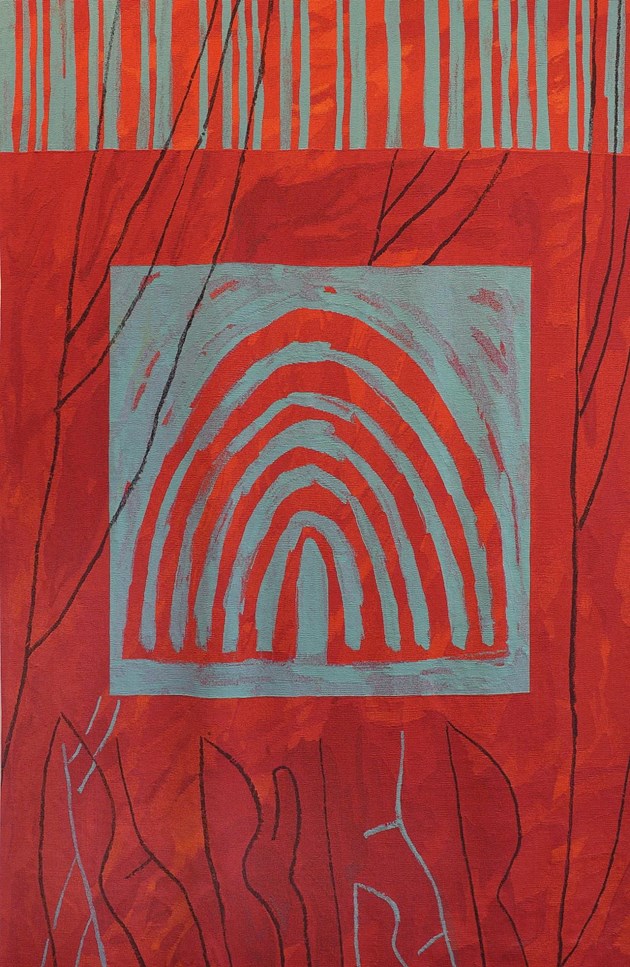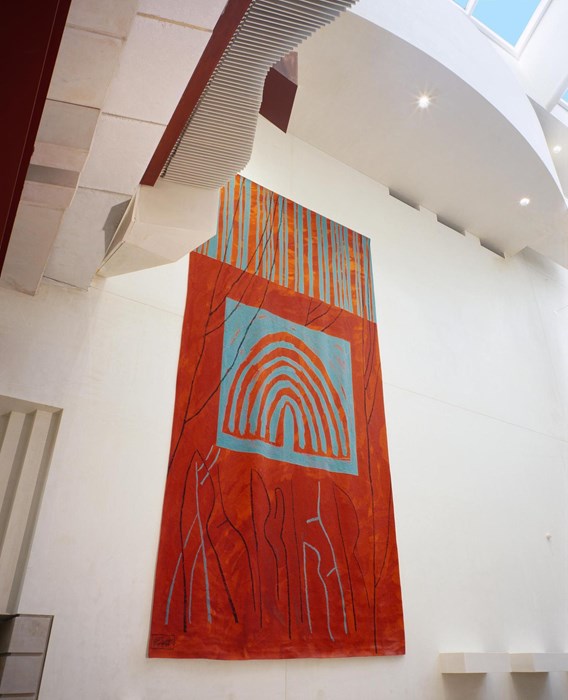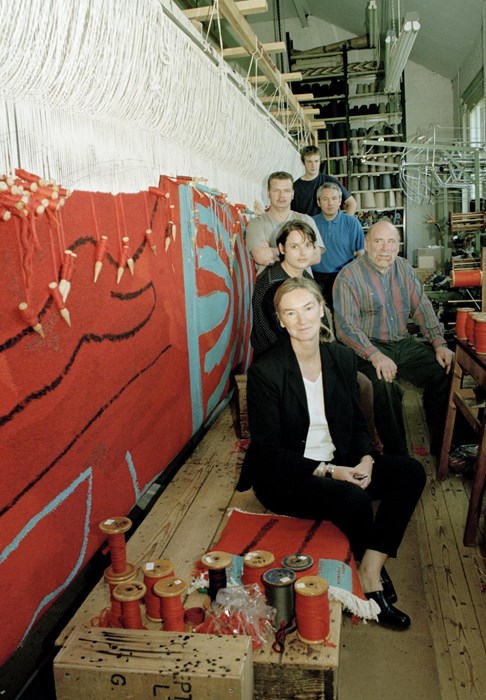Key in a search term below to search our website.
Key in a search term below to search our website.

Designed by Kate Whiteford, the title of the work refers to the notorious whirlpool to the north of the island of Jura and draws on the artists's fascination with signs and symbols of ancient civilisations.
Whiteford feels that the tapestry 'reflects the potential energy of both ancient and modern cross currents in the Museum and in contemporary society'.

The Corryvrechan Tapestry. Designed by Kate Whiteford and hand-woven by the Edinburgh Tapestry Company, 1997. © Kate Whiteford.
Date
1997
Designed by
Kate Whiteford, OBE
Made from
Cotton, wool
Made in
Hand-woven by the Edinburgh Tapestry Company
Museum reference
On display
Hawthornden Court, in the Scotland galleries at the National Museum of Scotland.
This tapestry was commissioned as part of a scheme to integrate contemporary art into the Museum of Scotland displays.
The design highlights links between the Museum's collections and the building, for example the runes at the base of the tapestry refer to our archaeological collections, which you can see on Level 0.

Kate Whiteford was born in Glasgow and studied at the Glasgow School of Art, Glasgow university and the University of London. She lectured at the Royal College of Art in London from 1994 to 1998. Renowned internationally for her large-scale paintings and installations, The Corryvrechan Tapestry was Whiteford's first work in this medium. Her work is represented in many major public and private collections, and she has received many awards and honours, including an OBE in 2001.
The Tapestry was made to Whiteford's design by the Master Weavers of the Edinburgh Tapestry Company, also known as Dovecot Studios. This company was established in Edinburgh in 1912 by the 4th Maquess of Bute. The founding weavers came from William Morris's Merton Abbey tapestry workshops in Wimbledon.
The studios became one of the key tapestry workshops of the 20th century, working in collaboration with many well known artists and designers including Stanley Spencer, Graham sutherland, Cecil Beaton, David Hockney, Elizabeth Blackadder and Eduardo Paolozzi.

Supported by the Scottish Arts Council National Lottery fund.